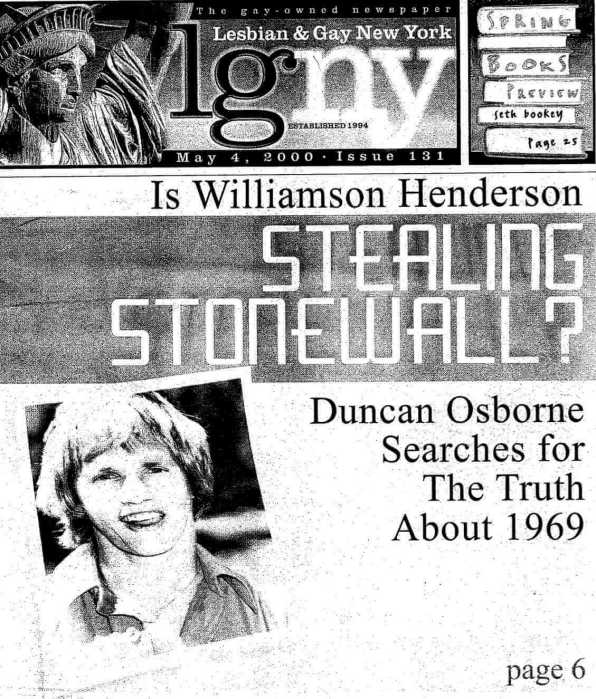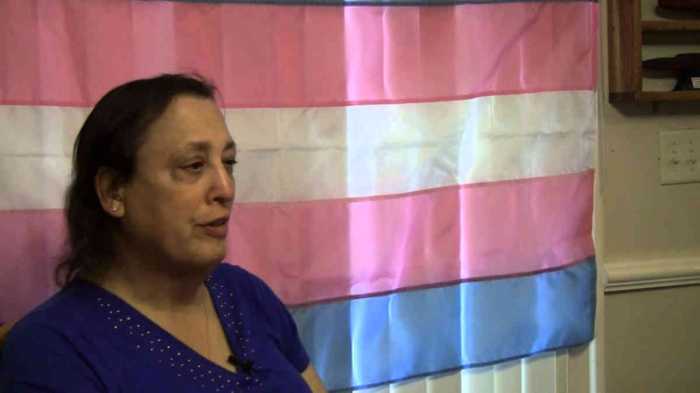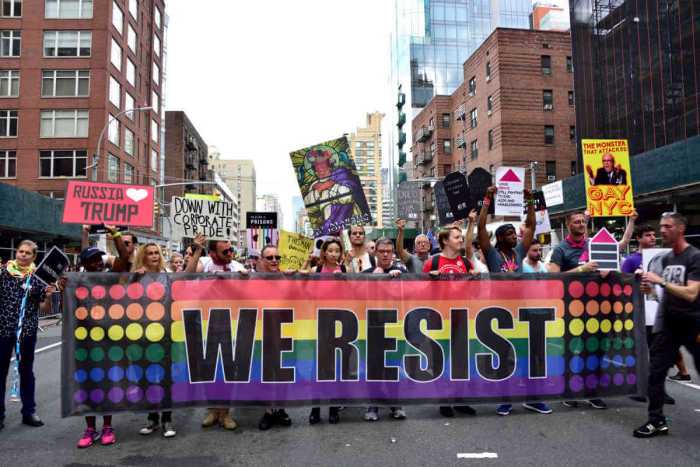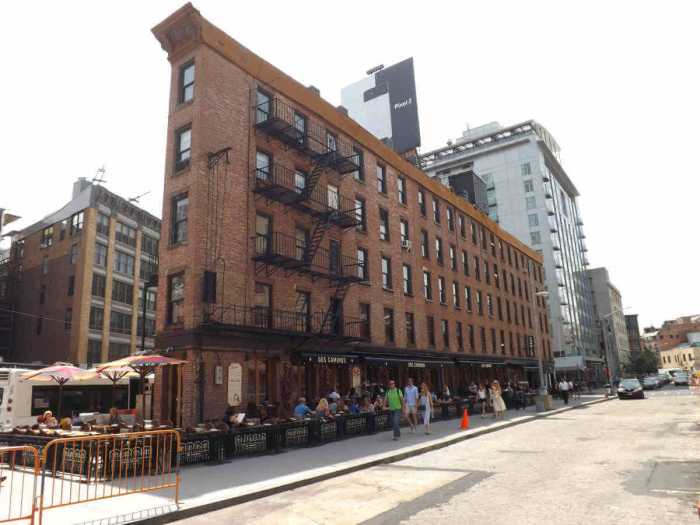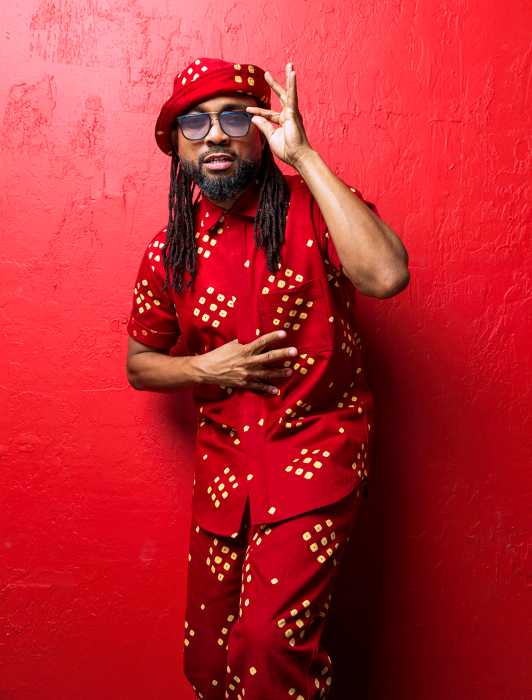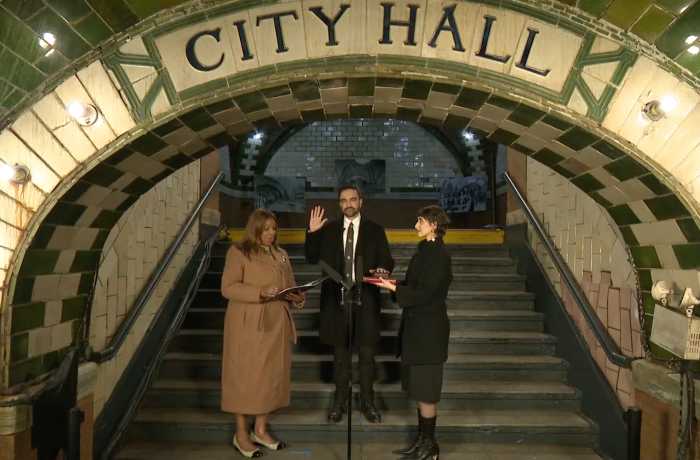Sidney Abbot, 1937-2015. | NEW YORK PUBLIC LIBRARY ARCHIVES
BY ANDY HUMM | Sidney Abbott, author with her then-partner Barbara Love of the groundbreaking “Sappho Was a Right-on Woman: A Liberated View of Lesbianism” in 1971, died in a tragic fire in her Southold, Long Island home on April 15 at the age of 77. Her life and work — “the complex mosaic called Sidney Abbott,” her friend Artemis March said — was celebrated by a crowd made up primarily of lesbians and other feminists at the Village’s Judson Church on June 16.
Love was unable to attend, but Love’s current partner Donna Smith read a passage from the “Sappho” book, a call to be a new kind of lesbian: “Gay liberation is committed to changing society so self and society can work in harmony. An activist takes on the burden of those who choose to hide.” It was radical stuff in those days when homosexuality was classified as a mental illness and homosexual acts were mostly against the law, including in New York.
In a video clip from Joyce Warshow’s 1989 “Why I am a Feminist,” Abbott spoke for herself about her mother’s “long line of Quakers” and her father’s “rebellious” Scots.
Life of lesbian feminist pioneer Sidney Abbott celebrated at Judson Church
“I got romantic ideas from my mother’s side and ‘just do it’ from my father’s,” she said, explaining that she became an activist after she and Love “became lovers.”
“I had not been around the gay lifestyle,” Abbott said. “We just wanted to be alone together. But it was the end of the ‘60s. Barbara said, ‘We’re like cockroaches. We come out at night and go back inside in the daytime.’ It hit me that my dad did not bring me up to be a cockroach!”
Abbott started going to gay clubs, and one of her first lesbian political acts was signing a petition just to get a gay ad in the Village Voice. She then gravitated to the Gay Liberation Front (GLF) — the first post-Stonewall militant group — and helped form the lesbian group Lavender Menace after Betty Friedan, president of the National Organization for Women (NOW), warned of a “lavender menace” she said would destroy the women’s movement.
Abbott also helped found Identity House to provide peer counseling for gays and lesbians and, in 1973, was a founding board member of what was then called the National Gay Task Force (NGTF). By 1989, she was ruminating on how her almost total devotion to activism in her 30s had left her without having established a career. But she still characterized it as “the best time of our lives.”
In a written statement, Love said, “I have lost a dear friend of 47 years — my partner and comrade during the most meaningful part of my life. I have lost a part of myself.”
Together, they founded 26 consciousness-raising groups for lesbians and, along with March in 1970, wrote a manifesto called “The Woman-Identified Woman,” published in the name of their group, Radicalesbians.
March recalled Abbott’s formulation that “a lesbian is the rage of all women condensed to the point of explosion.” She said, “Sidney could always be counted on to show up when needed — social worker, advocate, organizer. She moved heaven and earth… captured the revolutionary fervor of the movement, but was never mean-spirited or spiteful.”
Psychotherapist Phyllis Chesler concurred, saying, “She was so utterly without malice” and “had such a positive energy.” She said, “She died a terrible death. She went up in flames like Joan of Arc, ever the Amazon.”
Feminist pioneer Kate Millett said, “I just remember her being so damned funny!”
“Sappho Was a Right-on Woman” was published in 1971. | MADISON BOOKS
Veteran gay activist Jim Levin wrote in an email that he and Abbott spoke at SUNY New Paltz in 1972 to what was supposed to be a tiny student group, but “the idea of actual LGBT speakers at a college forum (one who actually taught a gay studies course — me) was so revolutionary that an enormous crowd appeared for the event and we had to be relocated to a huge auditorium.”
Levin and Abbott worried about some hostility from such a big audience. One of the first questions was, Levin recalled, “‘What is a dyke car?’ Rather than take offense, Sidney launched into a precise humorous description of the appropriate favorite car for lesbians that year which needed to be allowed to accumulate dirt and have minor damage left uncorrected. It brought down the house. From then on we had an obviously curious audience who learned mainly that LGBT men and women were ‘just folks’ and not stereotypes.”
Lesbian pioneer Charlotte Bunch, who served with her at NGTF, said Abbott “was very practical and didn’t get involved in ideological disputes. She was concerned about how to get things done.”
While many, including Bunch, were lesbian separatists, she said that Abbott didn’t see separatism as “practical.” They did demand and get a board for NGTF that was half women. And when they moved in 1977 for the NOW convention to include lesbian rights in the national platform, she said it was Abbott who pushed to have their old nemesis Friedan be one of the speakers endorsing it. “Sidney said, ‘It’s very practical, and it’s going to be important.’”
Historian Blanche Wiesen Cook celebrated Abbott’s life, but said, “It’s a hard time for a lot of older women” — the bulk of the assembled — with the very recent losses of Sidney, singer and activist Ronnie Gilbert, and Virginia Woolf scholar and feminist Jane Marcus. “Survival is the best revenge,” she said, “And real revenge is changing it forward and keeping up the legacy. We thank you, Sidney Abbott, for changing the world.”
Abbott’s nephew David Abbott read a poem to Sidney charting her journey in life from Laredo, Texas to Smith College to Greenwich Village to San Francisco to Albuquerque to Southold.
Joan Nixon, a veteran lesbian activist and famous as Bella Abzug’s driver, was a longtime friend of Abbott’s. “It is so astounding that Sidney is so celebrated now when she felt so alone and deserted” at the end of her life. Nixon had earlier told Windy City Times, “Before I realized I was a lesbian I got Sidney's book and after I read it everything changed for me. Her book opened my eyes to the concept of women loving other women and it was then that I realized that this applied to me.”
Jim Fouratt, a comrade of Abbott’s in GLF, said she and other lesbians “brought the gift of feminism and the women’s movement” to the nascent gay movement.
Gloria Steinem recalled Abbott’s “kindness, which might be the most important quality in life.” She said her own first exposure to lesbians in literature was “The Well of Loneliness,” a vision thankfully supplanted by “Sappho Was a Right-on Woman.”
“When someone we love dies,” Steinem said, “we don’t lose them. They change form… Sidney is here with us and will always be — even after we’re gone.”
Lee Zevy, former clinical director of Identity House, talked about Sidney’s contributions to the mental health of gays and lesbians there — gay people helping gay people.
Social worker and activist Steve Ashkinazy, a founder of the Harvey Milk School, wrote in an email that as the first out gay master’s of social work student in the country at SUNY Stony Brook, he was aided by Sidney — then an out administrator at the West 19th Street office of Compass House, a drug rehab program. She convinced the director “to lift the prohibition against LGBT kids and allow them into the program” and to hire him as an intern. “Because the need was so great and because there were no other places to go, within the first six weeks the population of the program became 50 percent LGBT.”
“None of this could have happened without Sidney Abbott’s fearless and inspired leadership,” Ashkinazy wrote, testimony that was echoed throughout the celebration of her life at Judson and that will resonate throughout LGBT history.
Editor's note: The story, as originally posted and in print, incorrectly identified the office of Compass House where Sidney Abbott worked as in East Harlem, where the program was headquartered, rather than on West 19th Street.




